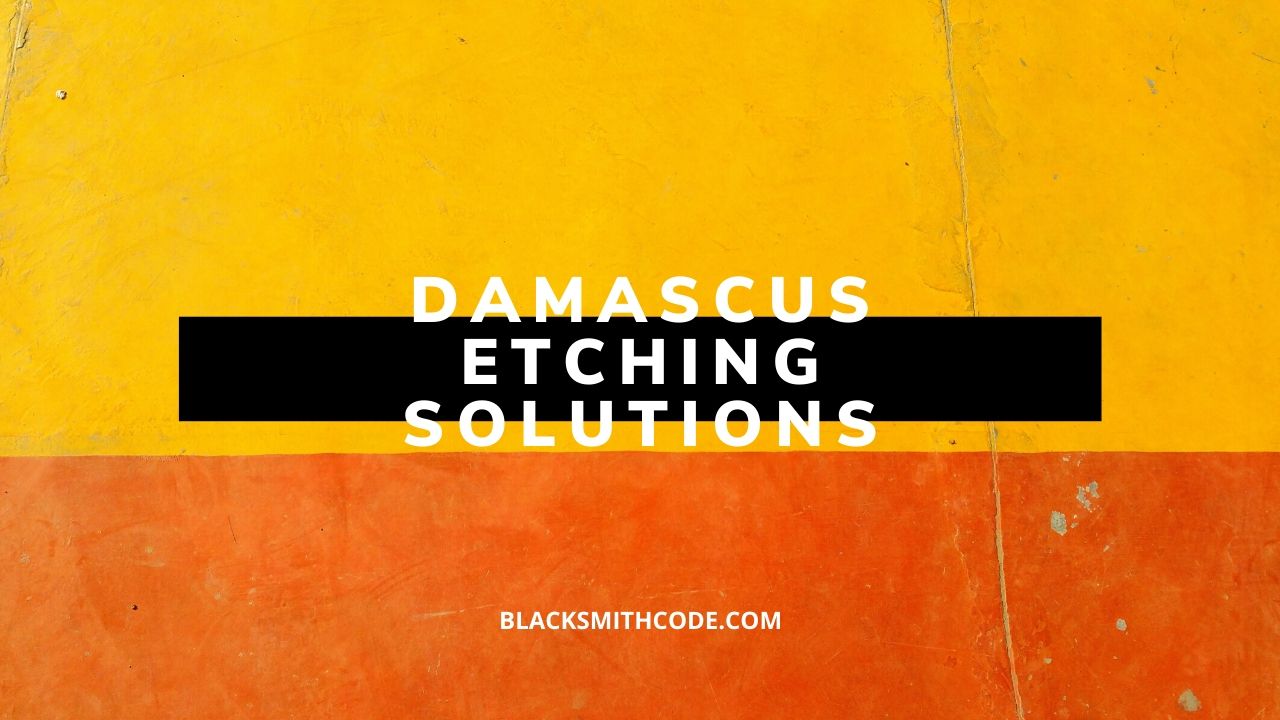Etching Damascus steel is a necessary process that can help you prevent the occurrence of spots on your finished work. When you don’t do etching properly, it guarantees you an excellent outlook on your Damascus steel. As much as etching Damascus steel does not require a much-complicated process, you need adequate materials to get it right. So, let’s learn how to how to acid etch damascus steel.
One of the determining factors of how well your etching will turn out on Damascus steel is the acid solutions you intend to use. The type and quality of the acid solution in use can dictate the result of the etching.
There are several factors to consider before deciding on which acid solutions to use.
Factors to Consider
- The risk factors of acidic solutions.
- Check the expiry date of the acid, as well as the risk factors
- The desired look intended on the Damascus steel
- Level of expertise.
Acid Solutions Useful In Etching Of Damascus Steel
The typical acid solutions used in the etching of Damascus steel. The suitable acidic solutions for the process include;
- Sulfuric acid: It is one of the most frequently used acidic solutions for engraving. It is readily available and not expensive.
- Nitric Acid: Nitric acid is one of the most aggressive acid solutions for this process. It might only take a few minutes to leave the steel.
- Vinegar: Vinegar gives a little bit of etching by heating it properly. Ordinarily, vinegar can act as discoloration, but the heating process will let it give etch for Damascus steel.
- Ferric Acid: Ferric acid common among blacksmiths because it easy to control its operation. However, the limitation of this solution is that it is quite slow and might be time-consuming.
Precautions To Take While Working With Acid Solutions For Etching Damascus Steel
- It is important to use face shields or safety glasses while working with acid solutions. This protection is necessary because the acid can splash while mixing the solution. You can alternatively have eyewash around you if you don’t have eyes shield. However, prevention is better than cure.
- Ensure you use adequate protective gear while working with acid solutions. Use rubber gloves and aprons before starting the process.
- Always ensure that you have proper ventilation in your workshop while working with an acid solution or etching Damascus steel as a whole.
- It is safe to have a neutralizing agent around while working with acid solutions.
- Make sure you properly dispose of both used acid solution and excess mixtures to avoid spillage or other pollution that can pose potential hazards.
- Make sure you check the expiry date of the acid you are using before preparing the solution.
Conclusion
Damascus steel pattern is one of the prevalent and most beautiful patterned finishing you can give to your steel. It provides the steel with or blades a classic and attractive outlook. However, the etching process must be done correctly to have the desired results.
Likewise, you should ensure that you make use of the appropriate acid solution and ensure that you take all necessary safety precautions involved in the process.

